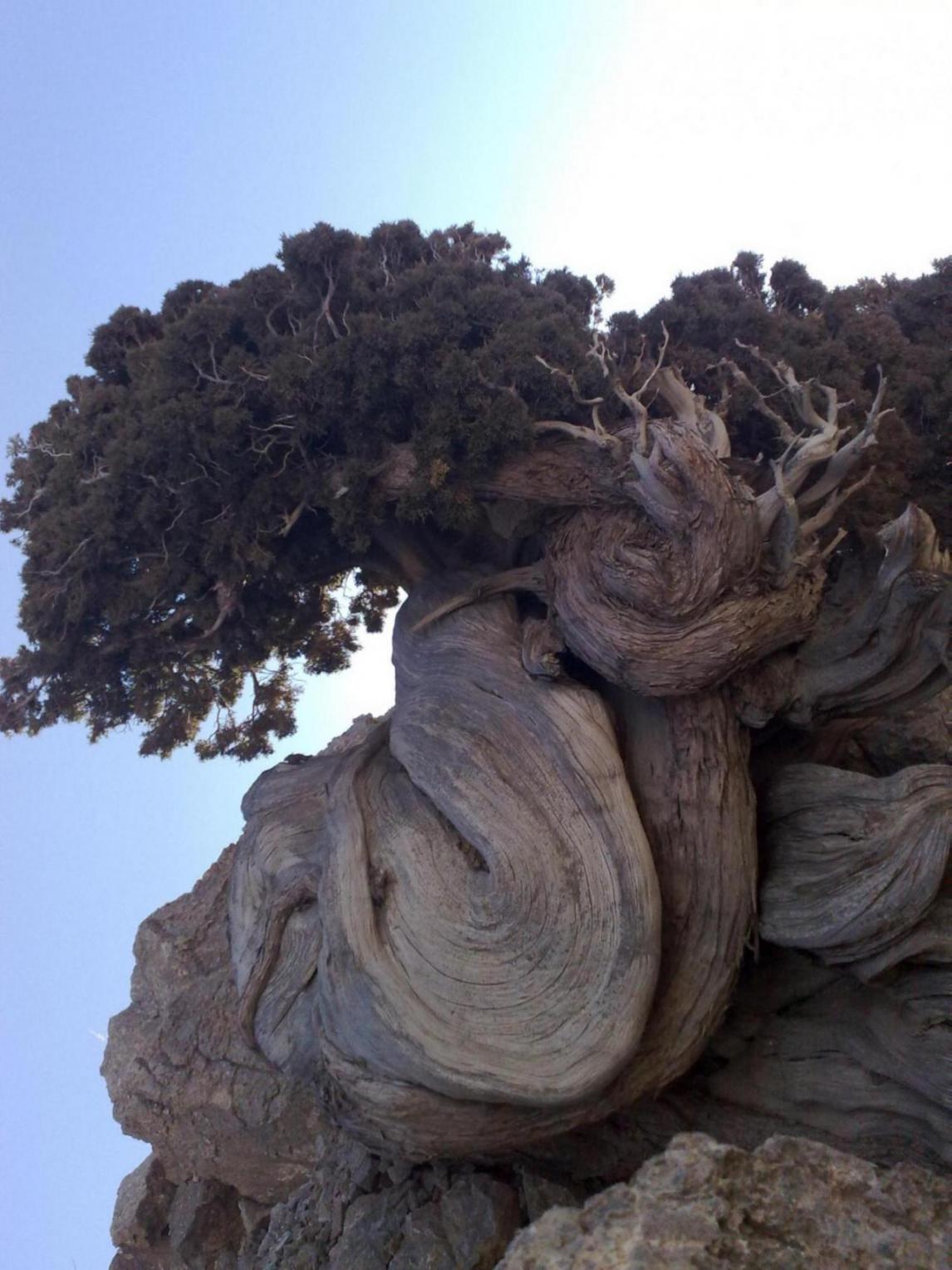High on the dry mountains of Iran is a magnificent tree. The tree’s Persian name is ‘ores’. It belongs to the multiple family of cypress, and is known by the common name of juniper or juniperus, according to the Research Institute of Forests and Rangelands.
On Zagros mountains, the southern slopes of Alborz, and also in the heights of Azerbaijan, Khorasan, and Jiroft, one who climbs higher than 2,500 meters, will see the robust tree, but oftentimes the aroma of the ores comes to attention, way before its sighting. Ores has a strong, pleasant aroma due to its high amount of resins.
Ores trees are usually gnarled and twisted, for they find the empty spaces between rocks and follow the direction of the winds. While they yearn for sunshine, their roots delve incredibly deep into the earth and stones.
Ores grows slowly, but lives long. One can easily be tempted to use its branches to light a fire, for they may seem dried. But life runs within the dry-looking branches. Resin seeps out of the broken stubs and is flammable under the sun; thus old ores can catch fire on a beautiful, sunny day.
The tree blooms with little yellow flowers that produce small, fleshy, green seed cones. The seed cones ripen and turn blue-black, or purple in two to three years and are called juniper berries. The juniper tree has bark that is reddish-brown and peeling. The needle like leaves are blue-green, narrow and pointed.
Some of the trees live over 2,000 years. Two oldest of such junipers in Iran are located near Abarsij village, north of Shahrud city, Semnan Province. At 2820 meters above the sea level, they enjoy the waters of a nearby spring. They are estimated to be over 2,500 years old. One of them is 247 cm in girth.


